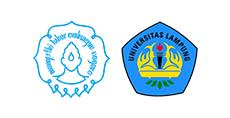The Development of Learning Media for 6th Grade Elementary School Solar System Courses-based on Android with Virtual Reality Technology
Abstract
This study aims to: (1) create learning media for android-based solar system subjects with virtual reality technology and (2) determine the feasibility of learning media for android-based 6th-grade solar system subjects with virtual reality technology. Solar system learning media for Android-based 6th-grade elementary school with virtual reality technology was developed using the Luther method through 6 stages: concept, design, material collection, manufacture, testing and distribution. The concept stage determines the objectives, materials, and content of the learning media that will be developed. The design stage is determining the material and storyboard. The material collection stage includes determining learning materials, Unity 3D assets, images, audio and others that support the learning media. The manufacturing stage is making learning media according to the predetermined design and storyboard. At the testing stage, we validated the product with media experts, material experts, and users. At the distribution stage, it produces media in the form of *.apk, which is uploaded to Google Drive. The validation of learning media is seen from the assessment of media experts, material expert assessments, and user assessments. Ratings obtained from all these aspects are 91.9% from media experts, 88.3% from the material, and 71% from users. The results of the three assessments have an average of 83.7%. From these results, it can be concluded that this learning media can be used as a learning medium.
Full Text:
PDFReferences
[1] Supriyono. Pentingnya Media Pembelajaran Untuk Meningkatkan Minat Belajar Siswa SD. Jurnal Pendidikan Dasar. 2018; II(1): 43-48.
[2] Nursyam, A. Peningkatan Minat Belajar Siswa Melalui Media Pembelajaran Berbasis Teknologi Informasi. Ekspose: Jurnal Penelitian Hukum dan Pendidikan. 2019; 18(1): 811-819.
[3] Hussein, M., Nätterdal, C. The Benefits of Virtual Reality in Education: A Comparison Study. University of Gothenburg, Chalmers University of Technology. 2015;
[4] Martín-Gutiérrez, J., Mora, C. E., Añorbe-Díaz, B., González-Marrero, A. Virtual technologies trends in education. Eurasia Journal of Mathematics, Science and Technology Education. 2017; 13(2), 469–486
[5] Yildirim, G., Elban, M., Yildirim, S. Analysis of Use of Virtual Reality Technologies in History Education: A Case Study. Asian Journal of Education and Training. 2018; 4(2), 62–69.
[6] Guritno, S., Sudaryono, R. U. Theory and Application of IT Research. Yogyakarta: Andi. 2011;
[7] Riduwan . Skala Pengukur Variabel-Variabel Pendidikan. Bandung: Alfabeta. 2009;
Refbacks
- There are currently no refbacks.






